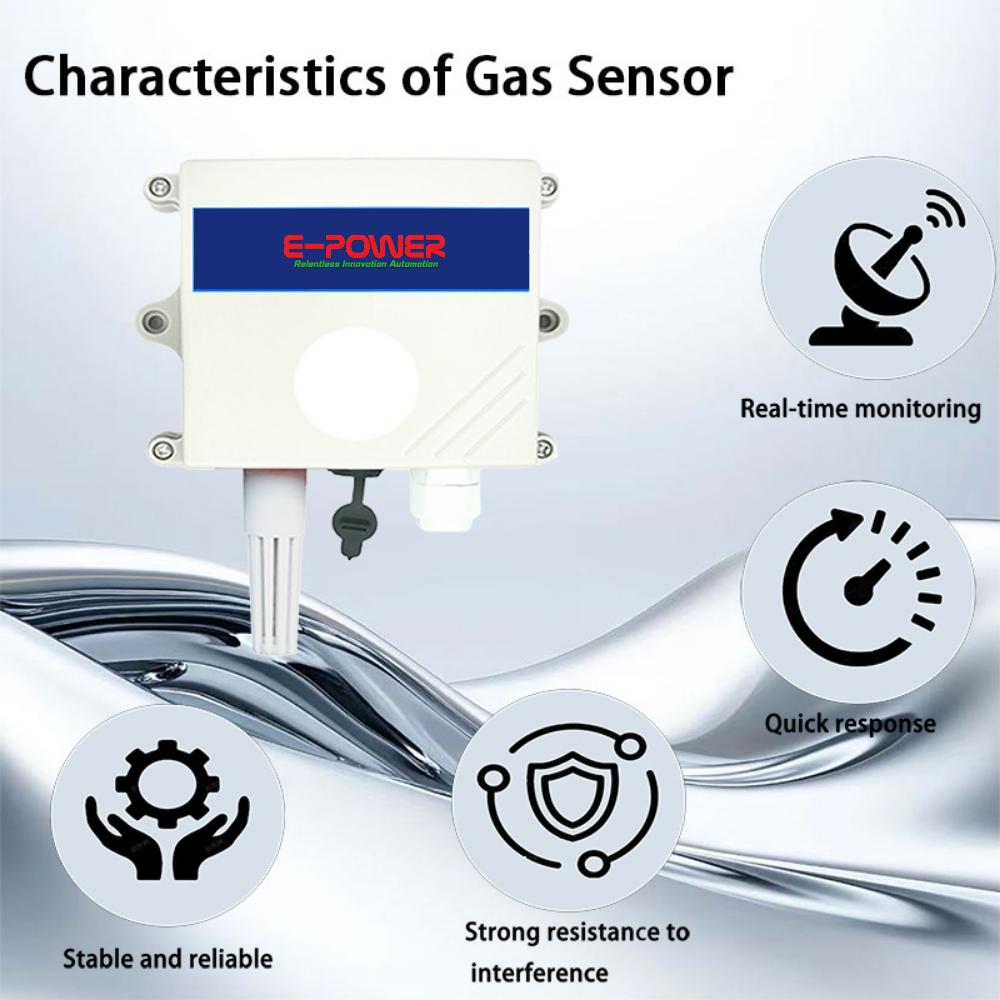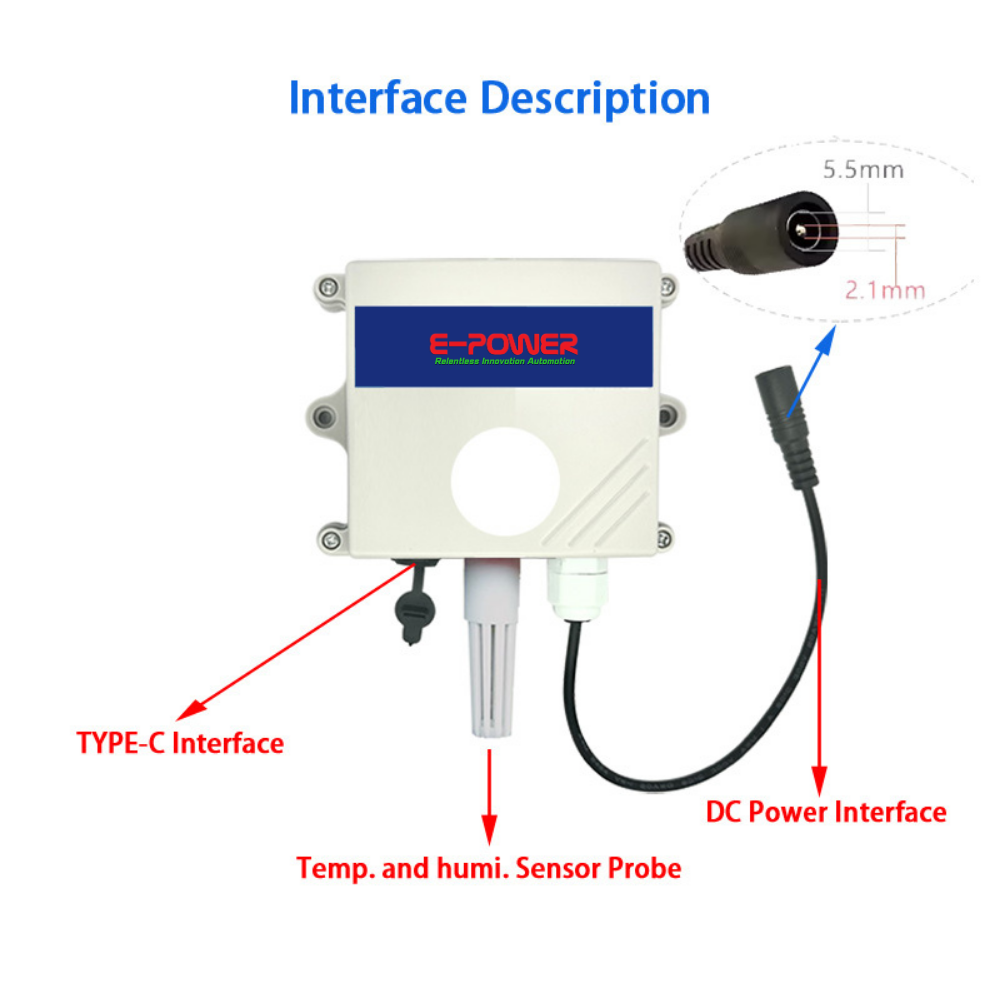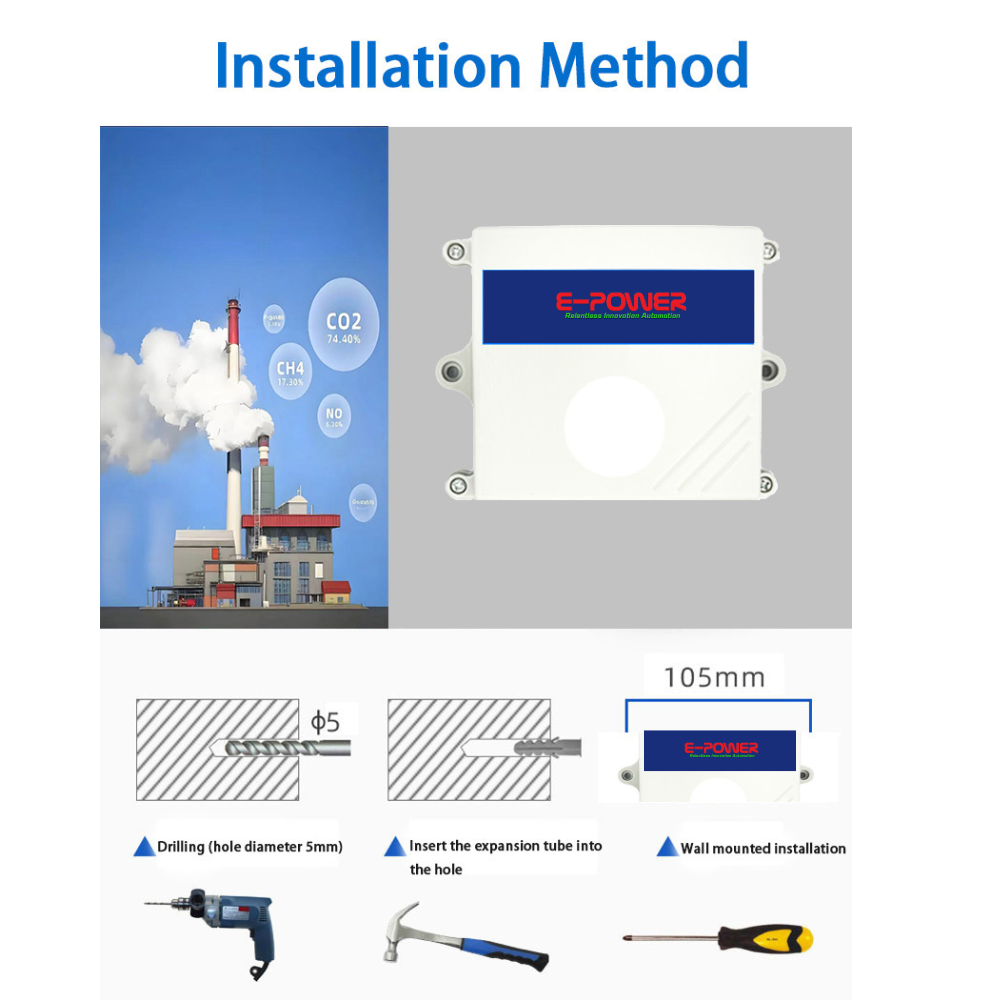


LoRa Phosphine (PH3) Gas Sensor
LoRaWAN Phosphine (PH3) Sensor is a new type of wireless gas sensor based on LoRaTM spread spectrum modulation technology.
PRODUCT FEATURES
- This is a wireless gas sensor, which is very powerful. It can collect data such as the concentration, temperature, and humidity of phosphine gas in the environment, and then keep an eye on the data changes. It can also transmit the data, so that we can know the situation at any time.
- It uses LoRa spread spectrum modulation technology, which is very powerful and can enable sensors and other devices to communicate over long distances. In addition, the built-in three-electrode electrochemical gas sensor and high-performance microprocessor work in harmony, the former is responsible for accurately detecting the concentration of phosphine gas, and the latter is like a "little head" that quickly processes the data.
- There are sensors specifically designed to detect phosphine gas, which can detect the traces of phosphine gas with great sensitivity, as well as temperature and humidity sensors, which can monitor the temperature and humidity of the environment at all times. In addition, it is equipped with a temperature sensor for temperature compensation, so that no matter how the ambient temperature changes, the concentration of phosphine gas can be accurately measured.
- It has a high sensitivity; as soon as there is a slight change in the concentration of phosphine gas in the environment, it can detect it immediately. The resolution is high, and the measured data is accurate to a very small value; It has strong stability and is not easily affected by external interference, and can still work normally in complex environments.
- A safety value can be set in advance according to the on-site environment. Once the concentration of phosphine gas detected exceeds or falls below this value, it will immediately report to us so that we can take prompt measures.
- It has a wide range of applications, such as monitoring the residual phosphine in grain fumigation in the granary; Chemical enterprises monitor whether there is phosphine hydrogen leakage in the production process; These places, such as sewage treatment plants and garbage disposal sites, can also monitor whether phosphine is produced, ensuring everyone's safety and environmental health.
PRODUCT PARAMETERS
| Power Supply | 5~28VDC |
| Weight | 120g |
| Operating Emperature | -20°C~50°C |
| Measuring Principle | Electrochemistry |
| Lifespan | <2 years |
| Measuring Range | PH:(0-1000)ppm Temp:-40°C~+80°C Humi:0~99.9 %RH |
| Frequency | CN470/IN865/EU868/RU864/US915/AU915/ KR920/AS923-1&2&3&4 |
| Mode | OTAA Class A/C(Default: Class C) |
| Reporting cycle | External power supply:5min(Default reporting cycle) Report after preheating for 3 minutes when powered on |
| Communication Protocol | LoRaWAN,LoRa TDMA Networking |
| Equipment information (Reference) | AppEUI: 0000000000000001 DevEUI: aaaa202404150001 AppKey: 00001111222233334444555566667777 MAC Version: LoRaWAN 1.0.3 |
Product Applications
1. High sensitivity and fast response: This sensor can detect extremely small amounts of phosphine gas and quickly accurately calculate the concentration, and immediately alarm when an anomaly is detected. Quick response and high sensitivity can reduce safety risks and save time for emergency handling.
2. Strong stability: No matter whether the temperature is high or low, the humidity changes, or there are other gas interference around, this sensor can work steadily, without any trouble for a long time, and the data is always reliable.
3. High selectivity: It can accurately distinguish hydrogen phosphide and other similar gases, and will not make mistakes (such as mistaking other gases for hydrogen phosphide), greatly reducing false alarms and missed alarms, and making the monitoring results more accurate and reassuring.
4. It has strong anti-interference ability: Even in a complex industrial environment with various kinds of interference, it can quickly grasp the subtle changes of phosphine and give reliable data to help us carry out environmental monitoring.



สินค้าที่เกี่ยวข้อง
- หน้าหลัก หน้าหลัก
- สินค้าอุตสาหกรรม สินค้าอุตสาหกรรม
- สินค้าเซนเซอร์ สินค้าเซนเซอร์
- บริการของเรา บริการของเรา
- บทความและข่าวสาร บทความและข่าวสาร
- ติดต่อเรา ติดต่อเรา


